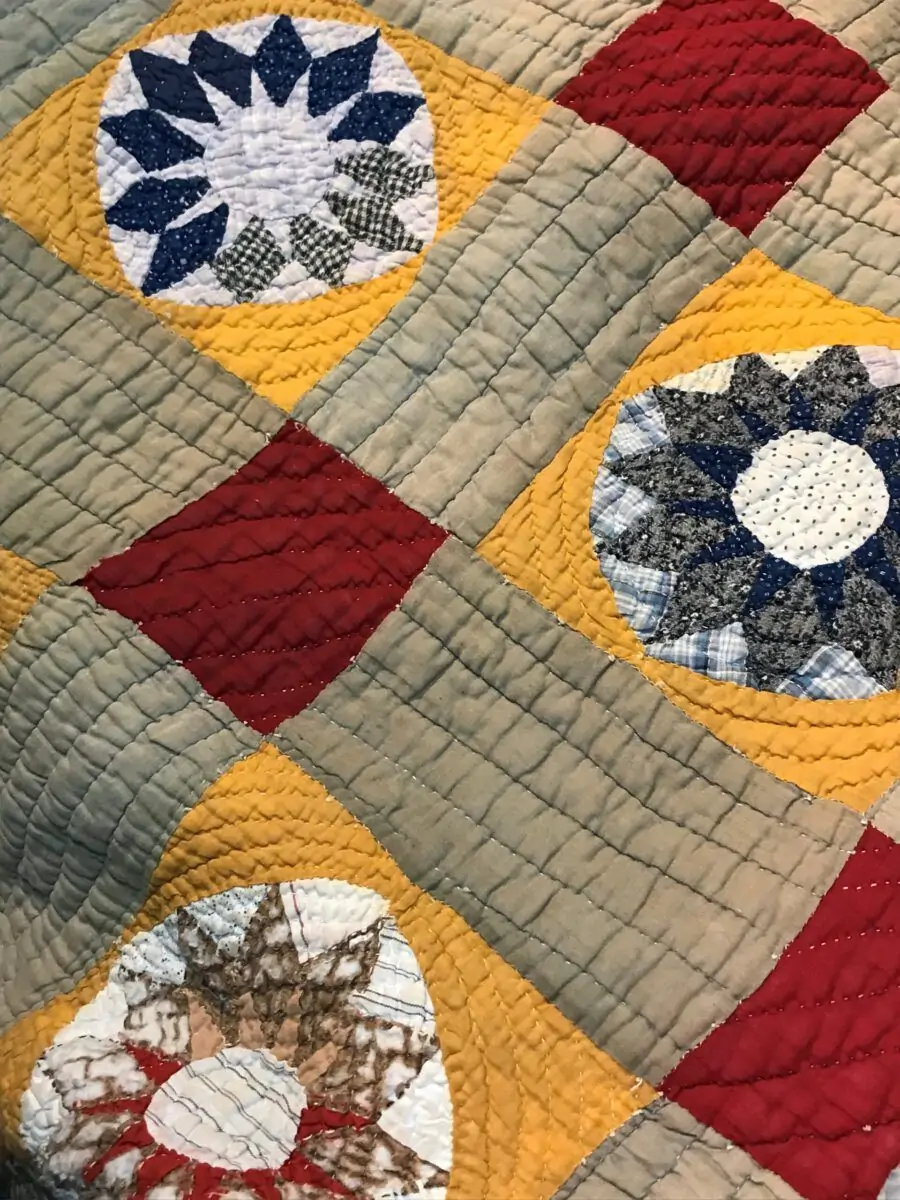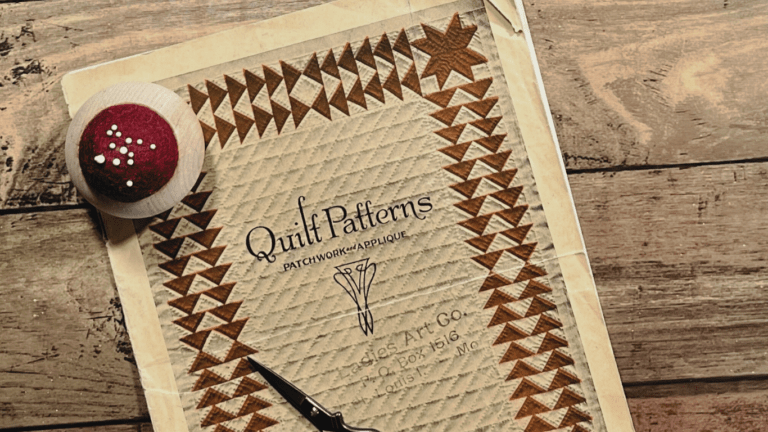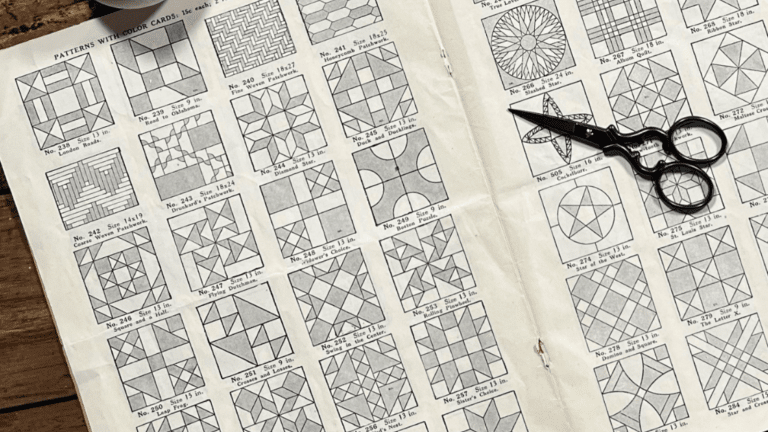Noonday Vintage Quilt Block
I love visiting antique stores. I especially love finding vintage quilts, orphaned quilt blocks, sewing machines, sewing boxes, etc. Specifically, I’m always on the hunt for vintage quilt block patterns I’ve never seen before. Recently, my husband and I went to Shelbyville, Tennessee for the day. Someone told us there were a lot of great antique stores in the town. After spending a day there, I agree.
How I Found This Vintage Quilt
The first store we visited was Antiques, Art, and Collectibles Mall on the square. We learned that long ago the 17,000 square foot space held a number of different stores. Then, it became a hardware store. The new owners began tearing down the walls that once divided the space. There must be at least five different floors throughout the space from hardwood to concrete. That is a lot of space for cast off treasures.
My best find of the day by far was a vintage quilt featuring a unique quilt block. The quilt had a high price tag, so I took pictures. But, I had never seen that block design before. The yellows, blues, reds, and khakis used in the top were gorgeous.
Identifying the Quilt Block
Once I got home, I hurried to find the block pattern in my copy of The Encyclopedia of Pieced Quilt Patterns compiled by Barbara Brackman. I originally misidentified this pattern as the Russian Sunflower which appeared in the Kansas City Star in 1932.
A closer inspection and careful counting of the petals in the ‘flower’ led me to look at Brackman’s book again. The block in my vintage quilt has only 12 large petals whereas the Russian Sunflower block has 15 large petals. This vintage quilt block pattern was actually titled Noonday. Ruth Finley shows the pattern in her book Old Patchwork Quilts and the Women Who Made Them (1929). Finley’s book shows an example pieced in orange and white (or so the caption reads).
In addition, I suspect that the quilt was constructed during the 1920’s or 1930’s due to the fabrics in the quilt. The backing fabric is a plaid which resembles a plaid fabric pattern shown in Dating Fabrics – A Color Guide 1800 – 1960 authored by Eileen Trestain. This type of plaid fabric was popular in the 1920’s.

Templates were most likely used to construct this block. If you look closely at the template layout below, you can see that there are 13 different templates (A -M). There are a total of 41 pieces to trace, cut, and sew together to make a single block. Can you imagine tracing the templates to newspaper or tissue paper and then using those templates to cut out each piece of fabric needed to make a single block? Due to the small size of the pieces and accuracy required, it was most likely hand-sewn. There are 24 blocks in the quilt. Looking at the pictures I took, I was certain that it had been hand-quilted as well. Amazing.

I began to think it might be worth the price . . . hundreds of hours of work must have gone into making it. It was one of those finds that I thought about for an entire week after leaving it behind. When would I ever be lucky enough to run across something like that again? So, I decided to go back to the store the following week and snatch it up. I have never ‘restored’ an antique quilt, but I was fairly sure that I could find instructions for cleaning it on the internet. I reasoned that first it needed to be as clean as possible. I’d worry about any repairs that needed to be done once I had a chance to inspect the quilt.







